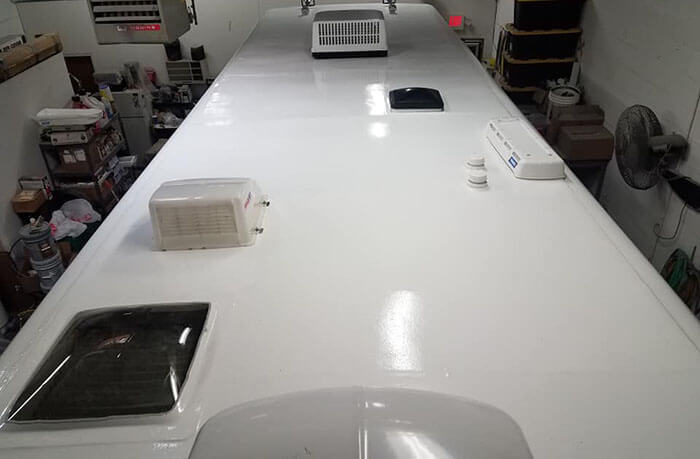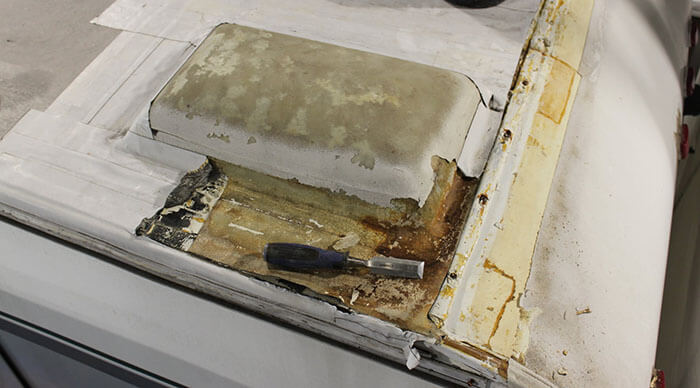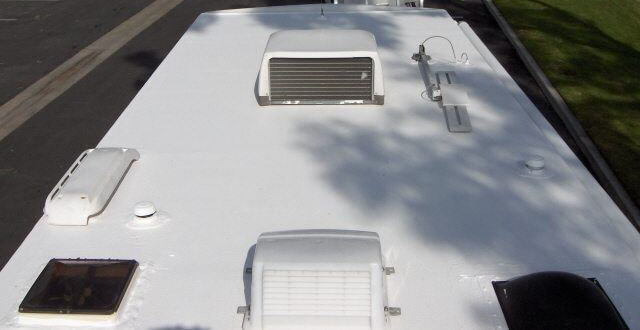When it comes to choosing an RV, there are many factors to consider. One of the most important is the roof. Is it walkable or non-walkable? There’s no doubt about it – an RV with a walkable roof is a lot more convenient than one without.
This may seem like a trivial distinction, but it can make a big difference when you’re on the road. Here’s a head-to-head comparison of the two roof types, so you can decide which is right for you.
What is a walkable RV roof?
A walkable RV roof is one that you can safely walk on without fear of damaging the roof or injuring yourself. They’re usually made of a stronger material, like steel or aluminum, and have a non-slip surface. This makes them ideal for cleaning and maintenance tasks, as well as for setting up solar panels or other rooftop accessories.
How do I know if my RV Roof is Walkable?

The best way to find out is to consult your RV’s owner’s manual. It will likely have information on the roof type and whether or not it’s safe to walk on. You can also ask the dealer or manufacturer if you’re unsure.
If you have an older RV, it’s likely that the roof isn’t walkable. This is because older models were often made with weaker materials, like asphalt, that can be damaged by walking on them. Even if your RV’s roof is made of stronger material, it may not be safe to walk on if it’s not designed for it.
What is a non-walkable RV roof?
A non-walkable RV roof, on the other hand, is one that’s not meant to be walked on. These roofs are usually made of weaker materials, like fiberglass or rubber, and can be easily damaged by foot traffic. They’re not ideal for cleaning or maintenance, and you’ll need to be extra careful when setting up any rooftop accessories.
Key differences between walkable vs non-walkable RV roof?
When it comes to RV roofs, there are a few key differences between walkable and non-walkable options. Here’s a quick overview:
1. Materials: Walkable RV roofs are usually made of stronger materials, like steel or aluminum. Non-walkable roofs are usually made of weaker materials, like fiberglass or rubber.
2. Convenience: Walkable roofs are more convenient for cleaning and maintenance tasks. Non-walkable roofs are less convenient and may require special care when cleaning.
3. Load capacity: If you plan on carrying a lot of weight on your roof, you’ll need to make sure your roof can support it. Walkable roofs are typically stronger and can support more weight than non-walkable roofs.
4. Solar panels: If you’re planning on installing solar panels, a walkable roof will be much easier to work with. Non-walkable roofs can be more difficult, and you may need to hire a professional to do the job.
5. Accessories: If you want to install rooftop accessories, like a satellite dish or TV antenna, a walkable roof will be much easier to work with. Non-walkable roofs can be more difficult, and you may need to hire a professional to do the job.
6. Cost: In general, walkable roofs are more expensive than non-walkable roofs. This is because they’re made of stronger materials and tend to be more durable.
7. Weight capacity: If you plan on carrying a lot of weight on your roof, you’ll need to make sure your roof can support it. Walkable roofs are typically stronger and can support more weight than non-walkable roofs.
8. Safety rating: When comparing roof types, be sure to check the safety rating. Walkable roofs are typically safer than non-walkable roofs, especially if you have young children or pets. Walkable roofs are safer for walking and working on. Non-walkable roofs are more dangerous and can be easily damaged by foot traffic.
9. Life expectancy: Walkable roofs tend to have a longer life expectancy than non-walkable roofs.
Now that you know the key differences between walkable and non-walkable RV roofs, you can decide which is better? but before deciding Let’s take a look at the pros and cons of each.
Walkable RV roof Pros:

1. They’re more convenient for cleaning and maintenance tasks.
2. They can support more weight than non-walkable roofs.
3. They’re easier to work with if you want to install solar panels or other rooftop accessories.
4. They tend to be more durable and have a longer life expectancy.
5. They’re typically safer than non-walkable roofs.
Non-walkable RV roof Pros:
1. They’re usually less expensive than walkable roofs.
2. They’re often lighter in weight, making them easier to install.
3. They can be a good choice if you don’t plan on walking or working on your roof.
4. They may be a better option if you live in an area with a lot of wind or snow.
5. They can be a good choice if you have young children or pets.
So, which is better walkable or non-walkable RV roof? It really depends on your needs and preferences. If you need a roof that’s easy to clean and maintain, then a walkable roof is probably the better choice.
However, if you’re on a budget or you don’t plan on walking on your roof, then a non-walkable roof may be the better option. Whatever you choose, be sure to check the safety rating and life expectancy to make sure you’re getting a roof that will meet your needs.
How to walk on a non-walkable RV roof?

If you have a non-walkable RV roof, there are a few things you can do to make it easier and safer to walk on. Here are some tips:
1. Use a ladder: The first and safest way to get on a non-walkable RV roof is to use a ladder. If you have a ladder that’s long enough, you can set it up next to your RV and climb up.
2. Use a step stool: If you don’t have a ladder, you can use a step stool to get on your roof. Just be careful not to slip and fall.
3. Use a chair: Another option is to use a chair to get on your roof. Just be sure to put the chair on a stable surface so it doesn’t tip over.
4. Use a rope: If you’re feeling adventurous, you can try using a rope to get on your roof. Just be sure the rope is securely attached to something sturdy.
5. Use a board: Another option is to use a board to create a makeshift bridge. Just be sure the board is long enough and that it’s securely attached to something sturdy.
Once you’re on your roof, be sure to walk carefully and avoid standing in one spot for too long. If you need to do any work on your roof, be sure to use caution and follow all safety guidelines.
When you should not walk on your RV roof?
There are a few circumstances when you should not walk on your RV roof. Here are some situations when it’s best to avoid walking on your roof:
1. When it’s wet: Walking on a wet RV roof can be dangerous and can damage your roof. If your roof is wet, wait for it to dry before walking on it.
2. When it’s icy: Walking on an icy RV roof can be extremely dangerous. If your roof is covered in ice, don’t walk on it.
3. When it’s windy: Walking on a windy day can be dangerous because the wind can knock you off balance. If it’s windy, wait for the wind to die down before walking on your roof.
4. When it’s hot: Walking on a hot RV roof can be dangerous because you can burn yourself. If it’s hot outside, wait for the temperature to cool down before walking on your roof.
5. When it’s stormy: Walking on your roof during a storm can be extremely dangerous. If there’s a storm brewing, wait for it to pass before walking on your roof.
In general, you should avoid walking on your RV roof unless it’s absolutely necessary. If you do need to walk on your roof, be sure to use caution and follow all safety guidelines.
Conclusion:
There are pros and cons to both walkable and non-walkable RV roofs. It really depends on your needs and preferences as to which is the better choice for you. If you need a roof that’s easy to clean and maintain, then a walkable roof is probably the better choice.
However, if you’re on a budget or you don’t plan on walking on your roof, then a non-walkable roof may be the better option. Whatever you choose, be sure to check the safety rating and life expectancy to make sure you’re getting a roof that will meet your needs.

Hi I’m Joiel Borid Creators of RV Outsider. Wild Life’s first camping was started when I’m 8 years old, at the Home Front Yard. Moto of RV Outsider shares my experience, expertise, and knowledge that I learned, and apprises about my next journey. So stay tuned with RV Outsider.
